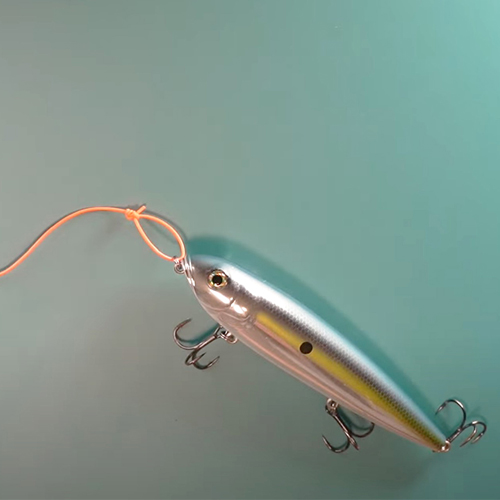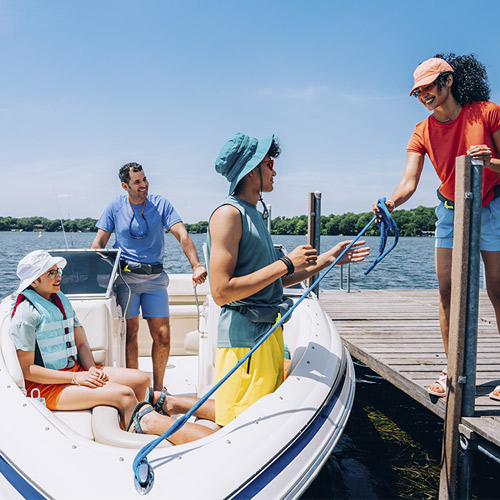Tackle Boxes and Tools
Now that you’ve got your rod, reel, and a collection of hooks and lures, you’ll need somewhere to store the parts you aren’t using so you can find them quickly and easily.
Tackle Box Set Up
A fishing tackle box or bag is a great way to start. And we’ll also talk about a few more items you might want handy.
Tackle Boxes and Bags
Fishing tackle boxes have lots of different compartments for sorting all your hooks, lures, bobbers, swivels, snaps, jig heads and so on. Modular boxes that allow you to set the size of each compartment are very popular, as are tackle bags, which hold several of such boxes plus have room for fishing pliers, fillet knives and other fishing gear. A tackle box backpack is a convenient and comfortable alternative to a tackle bag.
Fishing Pliers and Scissors
When considering your tackle box set up, be sure to include a good pair of pliers that incorporate several tools to do everything from cut wire to tighten knots and remove hooks. Also, a good pair of fishing scissors is another indispensable part of a fishing tool set for cutting line and bait. All fishing pliers combine jaws for gripping and blades for cutting.
Hook Remover
Hook-removal tools make the job quick and safe and should be included in fishing tackle boxes. With toothy fish, removing the hook with your hands or even a pair of pliers can be dangerous. When releasing a fish, it’s best to remove the hook without even taking the fish out of the water.
Landing Nets
The best tackle box will include a landing net. The size of the landing net should match the size of the fish that you’re aiming to land. Look for a fishing net with a wide hoop, double-walled aluminum handle, and deep net. Fishing nets with rubber mesh help protect the fish's slime coat and scales if it will be released after landing.
Gaffs
If you're planning on keeping a fish, nothing puts it in the box faster than a gaff so be sure to include one in your tackle box setup. Fishing gaffs come in various hook sizes and handle lengths; the best fishing gaffs have a tapered aluminum handle, non-slip grips and a triangular point. A short gaff is effective for handling big fish close to the boat, while longer gaffs are good for reaching out and grabbing a smaller fish. A gaff should only be used when you plan to keep a fish.
Lip Grippers
Whether you plan to store saltwater fishing tackle or freshwater, or tackle for specific species like bass fishing tackle, as you think about your tackle box setup, you may want to include lip grippers. While they aren't the best tool for landing a fish, they work well for holding and releasing the fish without putting your fingers in its gills or mouth so should be in all fishing tackle boxes. Look for a lip gripper that is constructed out of non-corrosive aluminum or stainless steel. Many lip grippers also have a fish scale incorporated into the handle.
Livewells, Baitwells, and Aerators
While you can use a bucket, there are also dedicated portable livewells and baitwells on the market that can help keep your bait or catch fresher. Add an aerator for maximum zip to your baits.
Waders and Vests
Waders let you get closer to the fish. Insulated waders are a must if you fish in cold lakes or streams. A fishing vest can help keep you organized and everything within reach for those who don’t have the luxury of keeping fishing tackle boxes or bags handy.
Fish Finder
Fish finders are sonar devices that help you locate fish. Usually mounted on your boat, these screens range from a few inches across up to the size of a small computer monitor. The finders show the water column vertically, giving you a picture of the bottom and marking fish within the column so you know what depth at which to fish.
Visit our section How to Fish to learn more about fishing techniques, where to fish, when to fish and more.
KEEP LEARNING

How to Tie the Non-Slip Loop Knot
The non-slip loop knot is a popular and reliable choice for securing hooks, lures, and other tackle to your fishing line.
LEARN MORE

Socials
Take me fishing social media links
LEARN MORE

TakeMeFishing x Teen Vogue
Join us on a creative journey as fashion designer Ahmrii Johnson walks us through her collaborative vision and process with Teen Vogue and fashion brand, Rentrayage, to create a special piece.
LEARN MORE


.png?lang=en-US&ext=.png)